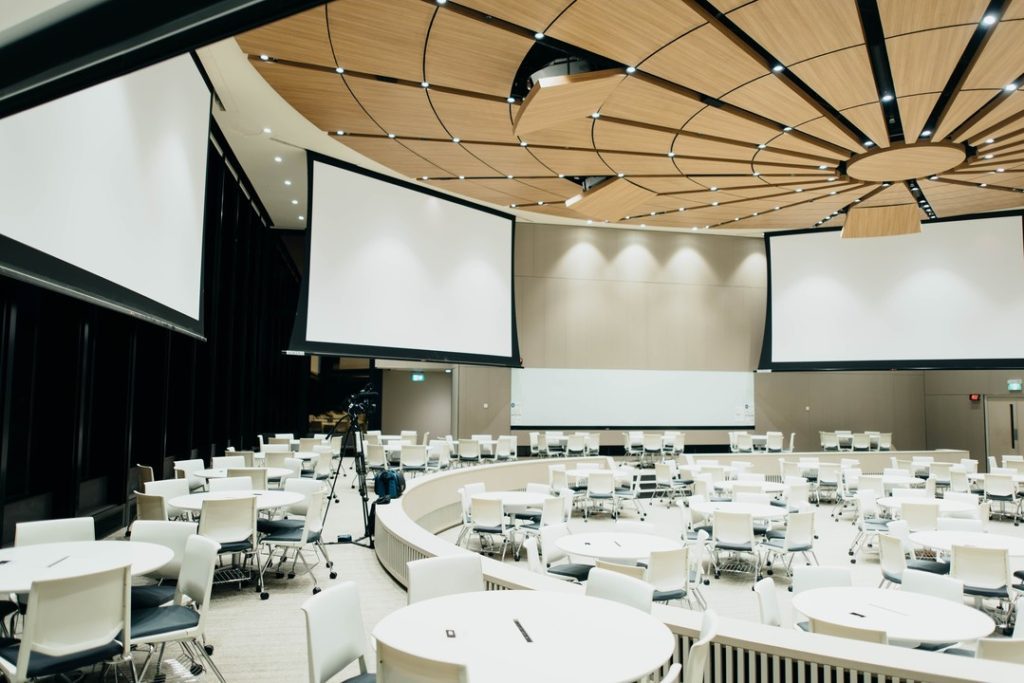AV integrators need to ensure the best possible experience. In order to do so, there is a long-lasting debate of how best to achieve this and whether wired or wireless installations offer the optimal end-user experience. While both types of connectivity have a variety of pros and cons, those tenured in the industry will agree that for consistent quality and a reliable experience, wired is always the way to go. But the reality is wireless presentation connectivity isn’t going anywhere… it is here to stay.
Wireless is Convenient and Sexy, but Less Reliable
The meteoric rise of wireless devices and cordless connections is tied to one thing, consumer driven ease. Wireless offers unbounded freedom and convenience yet is assuredly less reliable with its untethered medium of invisible transport. Sure, this untangled, wire-free usage is great for listening to music with AirPods, or streaming a YouTube video to your home TV, but what about an enterprise-wide installation with mission critical content, where time wasted is money lost. Are you willing to risk reliability then?
The quality of signal transport is always compromised when wireless connections are used. From signal compression, to latency, to RF interference, there is an inherent complexity of configuration with wireless and a limited reliability between paired devices. A disconnected-connection is never as solid as a point-to-point copper-connection. In the workplace, these air-gap factors are intensified and more challenging to manage.
The Intersection of IT
Anytime invisible digital streams of radio-waves are involved, there needs to be full buy-in from the IT team to support the infrastructure that carries these signals. For simple wired AV implementations, integrators handle all connections through the corded signal-path. When we jump into the wireless realm, there are ripple effects that affect IT.
From ensuring proper bandwidth and ports are managed, to aligning and coordinating RF frequencies, to QOS enablement for wireless streaming, to mitigating data security risks, wireless operations require more IT oversight to ensure things will go as smoothly as possible, while not negatively impacting other network functions.
In addition, there are many device archetypes to consider and plan around. AV integrators and their IT counterparts must carefully evaluate to ensure uniformity, maintain usability and recommend standardization for enterprise partners.
Most enterprise level wireless presentation platforms leverage app-driven connections between the device and the display (for example, Mersive, AirMedia, Enzo, Pano, ShareLink). While others that are more consumer-driven connection disrupt the market with device-native wireless formats, mirroring to their corresponding market products (for example, AirPlay, MiraCast, ChromeCast). Even still, there are other wireless presentation device types which attempt to circumvent IT challenges with “dongle” based solutions, like the Barco ClickShare product.
No matter what, you will need a strategic plan for wireless presentation.
Pick a Solution and Run with It
Creating a plan to be as end-user “device-agnostic” as possible and sticking to a single, multi-format capable platform is the best strategy. This critical plan requires a key decision be made. One specific product, with the support of all parties invested (AV, IT, and the end-users), must be selected. Companies or departments who use multiple wireless presentation formats will have a poor experience. Their indecision results in a lacking of consistency from room to room and various ways to “connect”. The result? Less adoption from a confused and frustrated end user group and support team.
No matter which format is ultimately selected, there must be a backed and consistent directive, driven from the top down to ensure a seamless and well-supported wireless presentation system rollout.
General George S. Patton once said,” A good plan violently executed now is better than a perfect plan executed next week.” … there is no perfect wireless product. Pick the best solution with the best information you have and then champion it fully with AV and IT both on-board.
Seamless End User Experience
At the end of the day, success or failure is contingent on the reliability, flexibility and convenience of the end user’s experience. The person in the room with the mission critical presentation must be able to understand how to connect, access features, and display content simply. The more consistent and easier you make the process, the greater the return on your investment.
While there are many uncontrolled variables, from device and format selection to user behavior and expectations, creating a uniform “device agnostic” platform mitigates most of these routine challenges. Even so, with wireless presentation devices there will always be the unexpected curveball. It is critical that you have a backup plan… A physically wired AV connection should always be available as a last resort.
It’s a fact, wireless AV installations are here to stay.
From now on, they will be growing in relevance due to their flexibility and convenience. Our role as AV integrators is to be adaptable and provide a consistent, tailor-made experience for all our client partners. Wireless presentations introduce new challenges for the enterprise workplace, but with a solid plan, a strong commitment to a specific product solution, and by always having that back-up AV connection in place, you can make wireless presentations a success.



